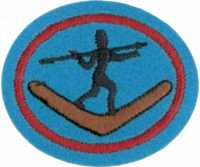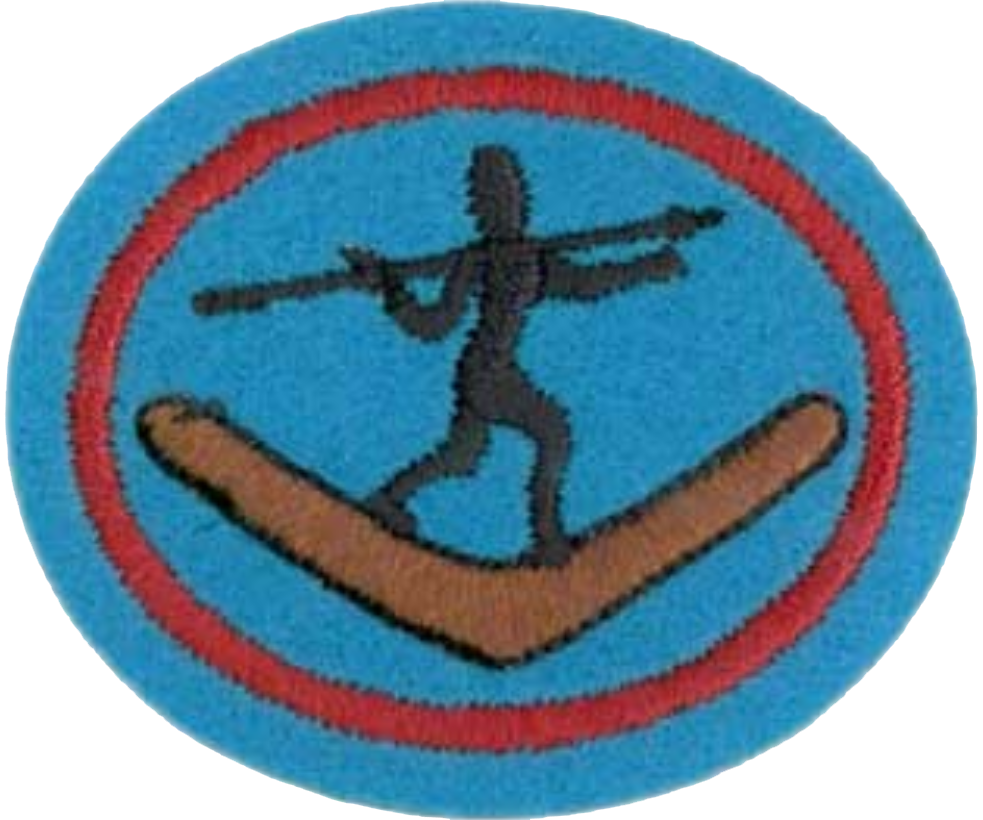Especialidades JA/Tradição aborígene/Respostas
Nível de Habilidade
1
Ano
2001
Version
06.12.2025
Autoridade de Aprovação
Conferência Geral
1
2
3
3a
3b
3c
4
5
6
7
8
9
10
11
The second consequence of British settlement was appropriation of land and water resources. The settlers took the view that Indigenous Australians were nomads with no concept of land ownership, who could be driven off land wanted for farming or grazing and who would be just as happy somewhere else. In fact the loss of traditional lands, food sources and water resources was usually fatal, particularly to communities already weakened by disease. Additionally, Indigenous Australians groups had a deep spiritual and cultural connection to the land, so that in being forced to move away from traditional areas, cultural and spiritual practices necessary to the cohesion and well-being of the group could not be maintained. Settlers also brought alcohol, opium and tobacco, and substance abuse has remained a chronic problem for indigenous communities ever since. The combination of disease, loss of land and direct violence reduced the Aboriginal population by an estimated 90% between 1788 and 1900. Entire communities in the moderately fertile southern part of the continent simply vanished without trace, often before European settlers arrived or recorded their existence.
As the European pastoral industries developed, several economic changes came about. The appropriation of prime land and the spread of European livestock over vast areas made a traditional indigenous lifestyle less viable, but also provided a ready alternative supply of fresh meat for those prepared to incur the settlers' anger by hunting livestock. The impact of disease and the settlers' industries had a profound impact on the Indigenous Australians' way of life. With the exception of a few in the remote interior, all surviving indigenous communities gradually became dependent on the settler population for their livelihood. In south-eastern Australia, during the 1850s, large numbers of white pastoral workers deserted employment on stations for the Australian goldrushes. Indigenous women, men and children became a significant source of labour. Most indigenous labour was unpaid, instead indigenous workers received rations in the form of food, clothing and other basic necessities. In the later 19th century, settlers made their way north and into the interior, appropriating small but vital parts of the land for their own exclusive use (waterholes and soaks in particular), and introducing sheep, rabbits and cattle, all three of which ate out previously fertile areas and degraded the ability of the land to carry the native animals that were vital to indigenous economies. Indigenous hunters would often spear sheep and cattle, incurring the wrath of graziers, after they replaced the native animals as a food source. As large sheep and cattle stations came to dominate northern Australia, indigenous workers were quickly recruited. Several other outback industries, notably pearling, also employed Aboriginal workers.
In many areas Christian missions provided food and clothing for indigenous communities and also opened schools and orphanages for indigenous children. In some places colonial governments provided some resources
After 1900
In spite of the impact of disease, violence and the spread of foreign settlement and custom, some indigenous communities in remote desert and tropical rainforest areas survived according to traditional means until well into the 20th century. Although missionary life was, by 1914, in retrospect absent of any meaning, most free men supported the war effort and around 1200[citation needed] answered the call to arms. Restrictions on Aborigines serving in the military were not relaxed until 1917, but many enlisted by claiming they were Māori or Indian.
By the 1920s, the indigenous population had declined to between 50,000 and 90,000, and the belief that the Indigenous Australians would soon die out was widely held, even among Australians sympathetic to their situation. But by about 1930, those Indigenous Australians who had survived had acquired better resistance to imported diseases, and birthrates began to rise again as communities were able to adapt to changed circumstances.
In the Northern Territory, significant frontier conflict continued. Both isolated Europeans and visiting Asian fishermen were killed by hunter gatherers until the start of World War II in 1939. It is known that some European settlers in the centre and north of the country shot indigenous people during this period. One particular series of killings became known as the Caledon Bay crisis, and became a watershed in the relationship between indigenous and non-indigenous Australians.
By the end of World War II, many indigenous men had served in the military. They were among the few indigenous Australians to have been granted citizenship; even those that had were obliged to carry papers, known in the vernacular as a "dog licence", with them to prove it. However, Aboriginal pastoral workers in northern Australia remained unfree labourers, paid only small amounts of cash, in addition to rations, and severely restricted in their movements by regulations and/or police action. On May 1, 1946, Aboriginal station workers in the Pilbara region of Western Australia initiated the 1946 Pilbara strike and never returned to work. However, this protest came as modern technology and management techniques were starting to dramatically reduce the amount of labour required by pastoral enterprises. Mass layoffs across northern Australia followed the Federal Pastoral Industry Award of 1968, which required the payment of a minimum wage to Aboriginal station workers. Many of the workers and their families became refugees or fringe dwellers, living in camps on the outskirts of towns and cities.
In 1984, a group of Pintupi people who were living a traditional hunter-gatherer desert-dwelling life were tracked down in the Gibson Desert in Western Australia and brought in to a settlement. They are believed to be the last uncontacted tribe in Australia.
The path to reconciliation: 1967 onwards
Indigenous Australians were given the right to vote in Commonwealth elections in Australia in November 1963, and in state elections shortly after, with the last state to do so being Queensland in 1965. The 1967 referendum, passed with a 90% majority, allowed the Commonwealth to make laws with respect to Aboriginal people, and for Aboriginal people to be included in counts to determine electoral representation. This has been the largest affirmative vote in the history of Australia's referendums.
In 1971, Yolngu people at Yirrkala sought an injunction against Nabalco to cease mining on their traditional land. In the resulting historic and controversial Gove land rights case, Justice Blackburn ruled that Australia had been terra nullius before European settlement, and that no concept of Native title existed in Australian law. Although the Yolngu people were defeated in this action, the effect was to highlight the absurdity of the law, which led first to the Woodward Commission, and then to the Aboriginal Land Rights Act.
In 1972, the Aboriginal Tent Embassy was established on the steps of Parliament House in Canberra, in response to the sentiment among indigenous Australians that they were "strangers in their own country". A Tent Embassy still exists on the same site.
In 1975, the Whitlam government drafted the Aboriginal Land Rights Act, which aimed to restore traditional lands to indigenous people. After the dismissal of the Whitlam government by the Governor-General, a reduced-scope version of the Act (known as the Aboriginal Land Rights Act 1976) was introduced by the coalition government led by Malcolm Fraser. While its application was limited to the Northern Territory, it did grant "inalienable" freehold title to some traditional lands.
Referências


